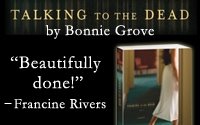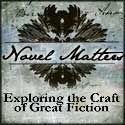
We've talked about self editing on the blog before. Today, Debby Mayne is here to give us a snapshot of the self-editing process. A suggestion would be to print out Debby's article and use it as a tip sheet, or step by step as you work your way through the editing process yourself.
Let's meet Debby:
Debby Mayne is a published author, Long Ridge Writers Group instructor, and speaker. Upcoming book releases include Peachtree Dreams in April 2009, Love Finds You in Treasure Island, Florida in June 2009, and Noah's Ark in October 2009
Editing your own writing is one of the most important things you can do before sending it off to a publisher. It doesn't matter whether you're pre-published or multi-published; ignoring this concept can be the kiss of death to that project and maybe even your future with that editor. You want your work to be polished and as professional as possible. Every writer has his/her own process, but most successful authors follow some or all of these basic steps.
First Draft
All writing starts with the first draft. Some writers labor over their work, and others purge their thoughts as fast as their fingers can type. Either way is fine. The initial writing has to happen before it can be revised.
First Read-Through
After the work is produced, it's always a good idea to look over it for grammatical, spelling, and consistency issues. I generally read the previous day's work and make corrections then move on to that day's writing. Not only do I correct as I go, it gets me back into the story. Some authors plow right through and wait until they're finished with the complete book/article/story before their first read-through. It doesn't matter which method you use as long as it brings you the result you need.
Cooling Off Time
It's always a good idea to put some time and distance between the first draft and the revision. This gives you the opportunity to look at your work more objectively since you're not so close to it. I like to write something completely unrelated to my project to freshen my perspective, sort of like cleansing the mental palate. For example, if I'm working on a fictional piece, I work on a nonfiction article before I revise my fiction.
First Round of Revisions
After I've separated myself from my work, I go back and look for opportunities to fine-tune the writing. The beginning of my project needs a strong introduction to capture the reader's attention. Each chapter needs a hook to keep her turning the pages. I replace as many passive verbs as I can with active verbs. Then I hunt for occurrences of pet words, such as "just," "that," "anyway," and "then," and either omit them or swap them out with other words or phrases. Other edits I make involve replacing dialogue tags with beats, strengthening dialogue, and varying sentence structure to keep a smooth flow to the writing.
Time, Sequence, and Consistency Revisions
Since I usually follow a detailed outline of the plot and have my character traits figured out before I begin, I check off each event as it unfolds in the story. I always go back and make sure each incident is well placed and makes sense after I'm finished because sometimes the characters have minds of their own, and they don't always behave. Each scene must move the story forward to the goal. Pacing needs to quicken and slow down at the right times with a balance of action, dialogue, and internal thought. All dialogue needs to be relevant. When I have seven days pass in my story, I make sure it equals a week in the story. If months go by, I show the important transformations of each character. Seasons also have to change as the story progresses. When I get to the end, I check to see if the resolution makes sense and isn't rushed.
Final Read-Through
Even after all that, I like to wait a few days then go back and read my story or article as a reader would. That gives me one last boost of confidence that the writing is as good as I can make it before I send it off to an editor. If anything jumps out at me, I highlight it and come back to fix it.
First Draft
All writing starts with the first draft. Some writers labor over their work, and others purge their thoughts as fast as their fingers can type. Either way is fine. The initial writing has to happen before it can be revised.
First Read-Through
After the work is produced, it's always a good idea to look over it for grammatical, spelling, and consistency issues. I generally read the previous day's work and make corrections then move on to that day's writing. Not only do I correct as I go, it gets me back into the story. Some authors plow right through and wait until they're finished with the complete book/article/story before their first read-through. It doesn't matter which method you use as long as it brings you the result you need.
Cooling Off Time
It's always a good idea to put some time and distance between the first draft and the revision. This gives you the opportunity to look at your work more objectively since you're not so close to it. I like to write something completely unrelated to my project to freshen my perspective, sort of like cleansing the mental palate. For example, if I'm working on a fictional piece, I work on a nonfiction article before I revise my fiction.
First Round of Revisions
After I've separated myself from my work, I go back and look for opportunities to fine-tune the writing. The beginning of my project needs a strong introduction to capture the reader's attention. Each chapter needs a hook to keep her turning the pages. I replace as many passive verbs as I can with active verbs. Then I hunt for occurrences of pet words, such as "just," "that," "anyway," and "then," and either omit them or swap them out with other words or phrases. Other edits I make involve replacing dialogue tags with beats, strengthening dialogue, and varying sentence structure to keep a smooth flow to the writing.
Time, Sequence, and Consistency Revisions
Since I usually follow a detailed outline of the plot and have my character traits figured out before I begin, I check off each event as it unfolds in the story. I always go back and make sure each incident is well placed and makes sense after I'm finished because sometimes the characters have minds of their own, and they don't always behave. Each scene must move the story forward to the goal. Pacing needs to quicken and slow down at the right times with a balance of action, dialogue, and internal thought. All dialogue needs to be relevant. When I have seven days pass in my story, I make sure it equals a week in the story. If months go by, I show the important transformations of each character. Seasons also have to change as the story progresses. When I get to the end, I check to see if the resolution makes sense and isn't rushed.
Final Read-Through
Even after all that, I like to wait a few days then go back and read my story or article as a reader would. That gives me one last boost of confidence that the writing is as good as I can make it before I send it off to an editor. If anything jumps out at me, I highlight it and come back to fix it.
*****
Rev up those red pens!
I bid you good writing.









3 comments:
Good advice. I like the part about knowing what mistakes you are prone to, and specifically looking for those while you're editing.
Good advice. Thanks for sharing.
I agree about that cooling off period. As much as I don't like to pull my self away, I find myself so much more objective when I return.
Koala, I also like how knowing your mistakes means you have done LOTS of writing - there is a tenaciousness implied there.
Lynn, I am now revisiting my debut novel, working through changes from my editor and I've found passages I completely forgot about. I read them as a reader, fresh to the book would. Weird!
Post a Comment